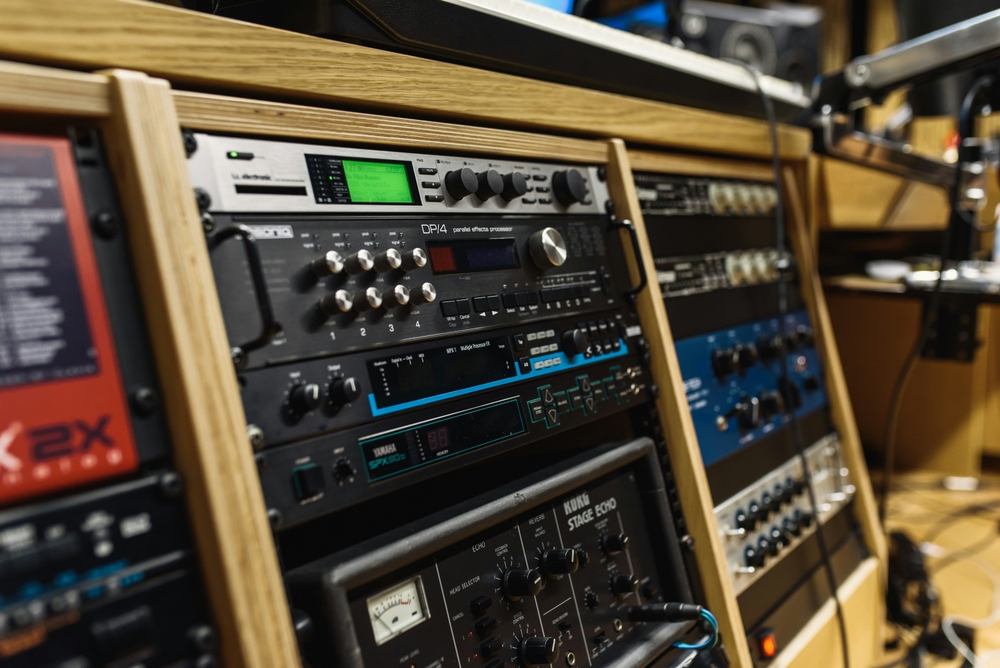Published
- 4 min read
The Listeners Headspace: Now Mastering Space

Where Do We Start!
In this digital era and streaming age, from the disruption of video to the transformation of audio in the distribution to consumption of media have influenced how we find and listen to music we enjoy. Hence the strongest brands don’t just look consistent — they sound consistent. Our perspective is simple: commit to a unique sonic signature and you create an audial promise listeners can trust, whether they’re on in-ear buds at work or standing under a festival PA. That promise is the difference between one-time plays and loyal fans.
Sound Stage 101
So now what does a reliable sonic signature stems with rethinking how we approach mastering and curation as branding tools, not merely technical steps. When mastering engineers and A&R teams align around a consistent sound design choices such as narrow set of tonal, dynamic and spatial choices — a preferred low-end contour, a midrange character, a reverb palette — where those choices define the Sound in the Music which over time becomes a recognisable fingerprint to your brand. For listeners and lovers of Deep House, Soulful House, Amapiano and Afrotech, that fingerprint helps solve how we build sonic brand that defined our in sound South Africa Space.
Why is this a valuebale insight into music production even live music
This starts with the listeners feedback that shapes those sonic rules that artists have transcript to music we all love. Their pain points are clear — inconsistent production across releases and an inability to predict whether a track will translate the experience we lounge to dancing from headphones to club speakers. But to answer that, brands should embrace and document a mastering playbook which is: reference tracks, loudness targets, recommended monitoring setups and a simple checklist that ensures a track preserves groove, depth and emotional intent across devices.
Back in the days of less resourced studio time an idea of “Cross-device fidelity” was not accidental. This start with testing our releases across typical listener environments to find a consistent sound that fills the listener’s headspace from— phone earbuds, desktop monitors, laptop speakers, and a monitored club PA — and make iterative mastering choices. Now Masstering this could start simple from high level thinking where you would try to preserve transient clarity for headphone listening, but manage LF content so the sub-energy translates in large rooms without turning muddy or lack of Low end are key elements that open your music to good experience across listening spectrum. Then the last but not least is your patial choices like how dry or wet and instrumentation space alignment straight from the box to the console should be dialed so they reveal depth on headphones yet cohere on mono-summed systems.
:::This is Why
The Equation is Not for Writting Better Music But Quality Sound
Curation is the other half of the equation. So artists and musicians that archive a sonic vibe have in some way of delivering it via consistent sequencing and sound design where listeners use these sonic cues to make rapid decisions of the sound behind music; when every release is vetted to the same standard, discovery becomes effortless.
What Happens After
The payoff is measurable. Streaming services have understand music from a sound design perspective such as looking at music with similar …So think about it like how the aka Loundness War started been a core filter in streaming services to recommended quality music to listeners in platform hence why owning a sonic identity build recall and loyalty faster, and artists under that umbrella benefit from predictable audience receptivity. For SouthStateSound, mastering the space between headphones and speakers is a strategic investment: it turns one-off listens into a relationship.
Final Thoughts
Listen with intent. Trust the stamp. Join SouthStateSound’s curated Playlists drops and feel the same signature in your earbuds, your living room speakers, and the festival soundcheck — because mastering space means mastering the listener’s headspace.
:::caution HTML-style comments will be included in browser DOM, while JS ones will be skipped. To leave TODO messages or other development-only explanations, you may wish to use JavaScript-style comments instead. :::